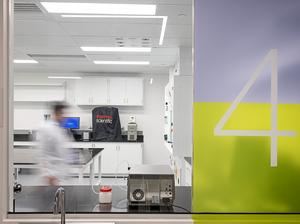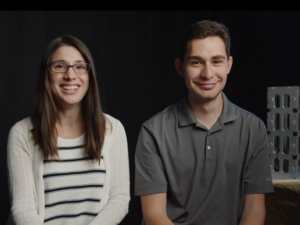
If you didn’t believe the chatter about robots taking over your job, this might be something to take stock of — Amazon will reduce the amount of temp staff for the upcoming holiday season, thanks to the robots it is deploying at fulfillment centers.
Collaborative robots, where robots work alongside humans (like in Amazon fulfillment centers) might make up only 3 percent of the market today, but that number is expected to jump to 34 percent in 2025. That’s a 1033 percent increase over seven years.
We marvel at Spot Mini, the robot dog dancing to Uptown Funk, but don’t forget that this thing has perception sensors that enable it to handle objects using its 5 degree-of-freedom arm and can outpace any human on a rough terrain. And its humanoid cousin Atlas, is 1.5 meters long, has range sensing and stereo vision and can do parkour.
But riding on the coattails of these successes would be missing the woods for trees. In October, we saw Rethink Robotics shutter. The company pioneered the concept of ‘cobots’ or collaborative robots with Baxter as early as 2012 and Sawyer in 2015. And Jibo, the company that promised the first social robot for $899, laid most of its staff in June, this year. A month later, Redwood City, Calif.-based Mayfield Robotics canceled its social home robot, Kuri, and said that it will shut down operations by October.
For Rethink Robotics, it was a failed acquisition. For Jibo, it was the pain of making an affordable home robot in a competitive market. And Mayfield Robotics, that was a part of Bosch, fell victim to a corporate restructuring where Bosch determined that there was no place for Kuri in its portfolio.
All of these illustrate out some of the inherent challenges present in running a robotic startup today. For every Spot and Atlas, there are probably several other robots that died an early death or never saw the light of day. And a lot of their problems are shared.
Capital-Intensive Endeavor
All robotics startup founders agree on one thing: it’s a capital-intensive business. This comes in the form of hardware as well as software components. Building a robot involves a lot of moving parts (no pun intended). The hardware, software, supply chain management, prototyping, testing..the list can be endless, depending on the purpose of the robot. But suffice to say, these problems are common.
“Whatever challenges you can imagine for any startup, in robotics, we have that and then some others,” said Jason Walker, CEO, and co-founder of Waypoint Robotics. The New Hampshire-based company makes industrial robots to be used in warehouses and factories. Walker pointed out that building and testing prototypes can be prohibitively expensive for an early-stage or growth stage robotics company.
"Even if you’re not selling robots, you need to build prototypes, and it’s prohibitive to build 10-20 of them," Walker said. "The prototypes are so expensive that it's hard to get any volume in sales of robots."
It's not just hardware costs that are prohibitive. Software costs add up, and can often be more expensive. Take it from someone who builds software platforms for robot arms. Rahul Chipalkatty, founder and CEO of Southie Autonomy, said that it's hard and expensive to build software that would build in a variation on a theme of tasks (For example, teaching a robot to line up boxes instead of stacking them).
"For every dollar spent on a robot arm, 2-5 dollars are spent in setting it up for the task," Chipalkatty said. Southie Autonomy is a part of MassRobotics and makes robot software called 'The Wand.'
"For every dollar spent on a robot arm, 2-5 dollars are spent in setting it up for the task."
Product to Market
A rising tide lifts all boats -- and we've heard this saying laced with impressive numbers to show that this might be the best time to start a robotics company. The global market for industrial as well as non-industrial robots is expected to touch $500 billion by 2025.
Then why the discordance between expectations from promising startups like Jibo and Mayfield Robotics and their delivered results? Entrepreneurs attribute it to the long timelines in bringing the product to market. Jason Walker, who has worked at companies like iRobot and CyPhy Works says it takes about four years for a product to hit the market and then for the company to grow.
"If a customer says, 'I’ll take 500 of your robots,' great! But now I need another million dollars just to buy the parts,” he said.. “It's like trying to build the airplane while flying it.”
Like in the case of Jibo, it took the company three years after its Indiegogo campaign to start accepting pre-orders. And often, this makes it harder for companies to raise follow-on funding.
"If a customer says 'I’ll take 500 of your robots,' great! But now I need another million dollars just to buy the parts."
Paradigm Shift
Entrepreneurs might be starry-eyed, but they are not in denial about challenges involved in running a startup. If the going were to get easier down the road, or if the customer mindset were attuned to change, maybe the other challenges would seem easier or worth the skyrocketing costs. "The challenge for a growing startup is that we are proposing a new paradigm," Chipalkatty said. "It's hard to quantify the value of robots, and the buy-in challenge represents a risk most people are not willing to take on." Chipalkatty noted that might have been the case with Rethink Robotics and Jibo too -- to deliver products customers see value in.
He's not alone in this thinking. Fergal Glynn, VP of marketing at Waltham-based 6 River Systems, thinks that getting customers to trust robots is a big challenge. 6 River Systems makes a collaborative robot called Chuck that is used at warehouses and fulfillment centers. "It's a competitive market and it's absolutely mission critical to prove that the technology works," said Glynn.
Sure, there is excitement and enthusiasm about artificial intelligence and machine learning, but how much of it permeates to making cost-effective business decisions? David Johnson, CEO of Dexai Robotics at Greentown Labs, said that it's hard to demonstrate return on investment when a company is at the forefront of hardware as well as sofware development. "It's easy to get people to try automation but having a robust usable product is hard." Dexai Robotics wants to help automate the food industry.
Youssef Saleh, founder and CEO of Ava Robotics, thinks one way out of this conundrum is to focus on the problem rather than the solution -- and the key, he suggests, lies in being specific. "When you get into robotics, there is a lot of ways to innovate," Saleh said. "The question is how can you really understand the customer’s problem and be able to address that with very specific solutions." Cambridge-based Ava Robotics makes autonomous telepresence robots for enterprises.
The Space Crunch
Even with its myriad of challenges, there are some that are easier to solve than others. And for most robotics startups in Boston, this one is harder than others -- the lack of space.
"Even a tiny robot needs a lot of space to build, test and ship," said Walker. "If you do software, you can do it from a dorm room, but if you are building robots, you need space."
For companies that are part of incubators and accelerators with this necessary physical space, like MassRobotics, this might put off conversations about what the future holds for participating startups' HQ. Regardless, some realize that come graduation, change is necessary for continued growth.
“We’re now at MassRobotics and it’s great, but you need space to do testing, and [we] eventually will have to move out of Boston [for that],” Chipalkatty said
Talent
Sourcing the right talent is another problem robotics startups must contend with. Facet Executive Search President Nick Bliamptis, who has a front seat to the issue as his company scouts AI, robotics and machine learning talent, agreed. "Over the last two years, I've been doing more robotics projects," Bliamptis said. "But my clients tend to be extremely selective. They are looking for seemingly similar positions, but the specifics are very different."
Walker thinks people are the most capital-intensive part of a robotics startup. "You pay a premium for people who are good at robotics," he said. "If you want to be in a space where there are experts and engineers, then you’re in a space where there is competition for those people. This makes it harder."
Bigger Rivals
If these challenges and were not enough, there is the added competition from bigger, established multinationals like Universal Robots and ABB. ABB, a Swedish-Swiss company that makes YuMi, a dual-arm collaborative robot
"Although you have a lot of companies that are building interesting tech and robots, the big guys have entered the early-stage market and that makes it challenging," said Vivjan Myrto, founder and managing partner at Hyperplane Ventures, an early-stage VC firm that has investments in the field. "There is a need for more funding in later and growth stages," Mryto said.
Even with its restraints, companies in robotics are seeing increasing interest and excitement from investors and industries that are ready to automate. "2019 should be a much better year," Myrto noted.
And while we wait, here's a video of 1300 robots dancing in perfect coordination to break a world record.








